Big trouble in ‘Little Berlin’: the tiny hamlet split in two by the cold war
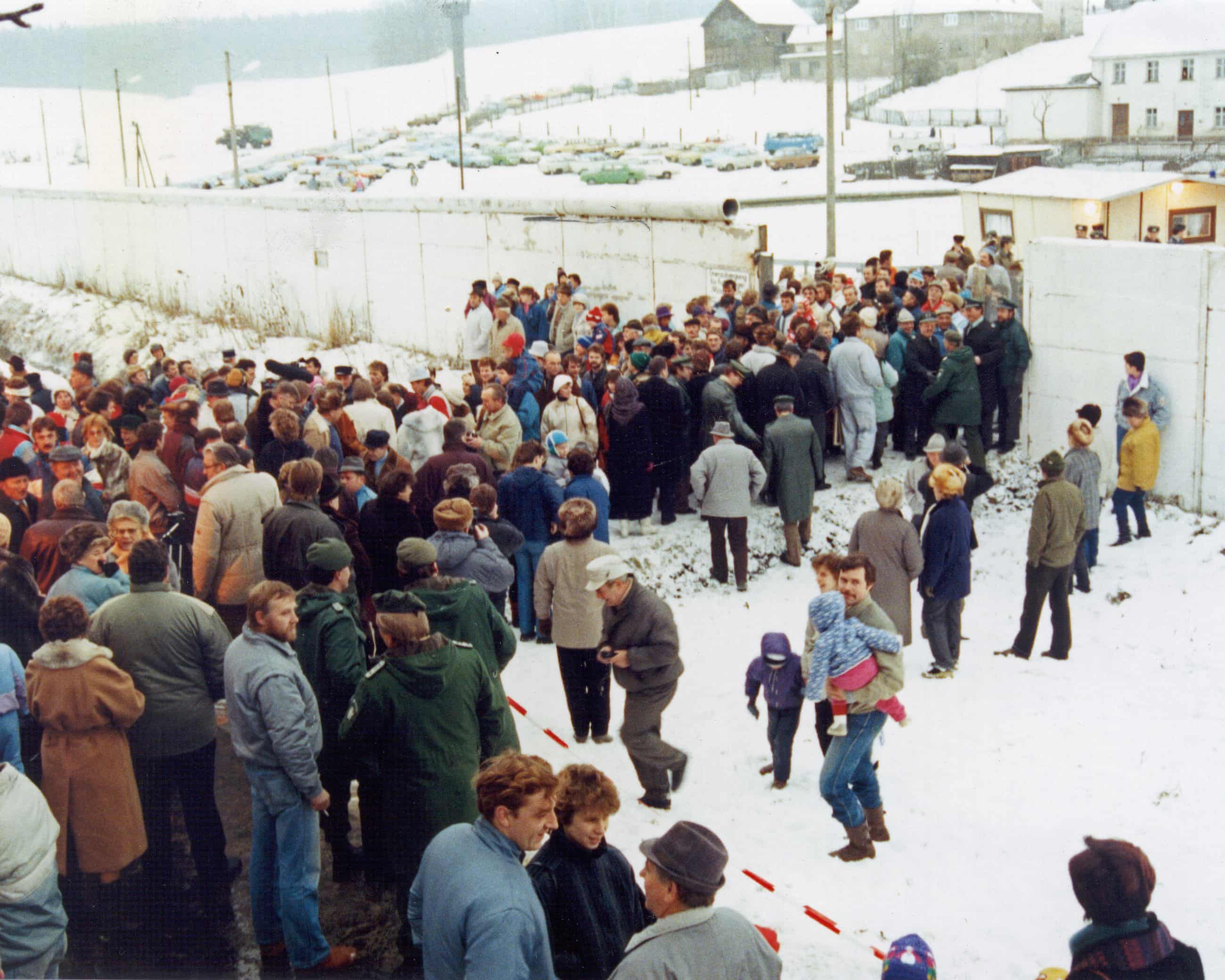
A new museum in Mödlareuth tells the story of how a settlement of only 50 people straddled Bavaria in West Germany and Thuringia in the eastA creek so shallow you barely got your ankles wet divided a community for more than four decades.By an accident of topography, the 50 inhabitants of Mödlareuth, a hamlet surrounded by pine forests, meadows and spectacular vistas, found themselves at the heart of the cold war.They had the misfortune to straddle Bavaria, in West Germany, and Thuringia in the East, a border that was demarcated first by a fence and then by a wall.American soldiers called it Little Berlin.Months after their own wall was breached, and even before their country had reunified in 1990, a group of local people set about memorialising their history.
The work is about to come to fruition: on 9 November, the 36th anniversary of the fall of the (big) Berlin Wall, the German-German Museum Mödlareuth will open,It was officially inaugurated by the federal president, Frank-Walter Steinmeier, in early October, but the exhibition wasn’t quite ready,Addressing the villagers who lived through the old days, Steinmeier said: “You were witnesses of an inhuman division, which ripped families apart and turned neighbours into aliens,”Even at its founding in 1810, the village cut across the Kingdom of Bavaria and the Principality of Reuss, a princely house best known for giving all its male members the name Heinrich and numbering them sequentially by birth,As Steinmeier told the audience, the quirk never stood in the way of the inhabitants drinking in the same pub, attending the same church and sending their children to the same school.
Then came the second world war.As soon as they arrived, the Russians erected wooden posts by the stream.For a year they took over the entire village, establishing their command in a house on the Bavarian side, adorning it with a picture of Stalin and a red star.The Americans convinced them to withdraw back over the brook.For a while, villagers could still hop over, though as restrictions tightened they were required to show ID, even though everyone knew who they were, and to return at night.
Then, in 1952, came barbed wire and the formal closing of the border,In 1966, as in Berlin five years earlier, a wall was built, with mines, tank traps and guard posts,The villagers could still see each other by climbing hills, but on the eastern side waving and shouting were prohibited,One woman was put on a Stasi watch list for responding “same to you” to a (Bavarian) villager who wished her “happy new year”,I was told stories such as these by Robert Lebegern, the museum’s director, who has spent much of his working life creating it.
Villagers were consulted early on about how much wall they wanted to preserve.They chose a stretch on the western fringe, close to where one of their own managed to escape in the dead of night with a ladder, after which the border was heavily reinforced.Two watchtowers are preserved alongside a series of tableaux depicting the most dramatic dates in the village’s history.As we walk, Lebergen lists the regulations: nobody could come within 5km of the border.Farmers needed special permission to tend to their crops; the husband or wife could work the combine harvester but never both, in case they tried to make a run for it.
Armed guards stood watch.The border between West Germany and the GDR stretched 1,400km, from the Baltic Sea in the north to here in the south.Berlin is remembered and memorialised the most, but more than twice as many people (well over 300) died trying to cross it in rural areas than in the big city.Lebegern reminds me that 95% of escape attempts failed.Most of Mödlareuth’s villagers were farmers or craftsmen, who adjusted to living in the grey zone between two ideological spheres by keeping their heads down and looking after their fields.
They neither supported the communist regime nor resisted it, Lebegern explains.For visitors, however, the hamlet became a kind of pilgrimage.About 15,000 came to visit every year, binoculars in hand, to gawp – and then quickly leave.In 1983, the US vice-president, George Bush, was shown around by the German defence minister.Twenty five years after reunification, Tannbach, a TV series about a fictional village resembling Mödlareuth, led to renewed interest.
The opening of the new museum – with a cafe, shop, cinema room and large car park – is likely to provide a further boost.Will it change the village? It is, in any case, changing all the time.Some of the original inhabitants on both sides have died; others have left.Newcomers have moved in, including a man from Leicestershire called Darren.His German wife, Kathrin, is a traffic cop for the Bavarian police.
They live up a hill, past a chicken coop, on the Thuringia side.The village is still divided, administratively at least, with different car number plates and postcodes.When Steinmeier visited, he was accompanied by the state premiers of both Bavaria and Thuringia.And when his foot crossed the brook, he was formally handed over by one police force to the other.History has moved on; the border has not.
This article was amended on 3 November 2025.George Bush was vice-president, not president, when he visited in 1983.

Nige is no longer laughing at himself as he ‘performs’ yet another big speech | John Crace
The scene: an old banking hall in the heart of the City. The music: first, Richard Clayderman plays Bach. Then Pachelbel’s Canon, followed by the Adagio from Mahler’s 5th. Death in Venice, Live in London. Not the usual venue or playlist for a Reform press conference
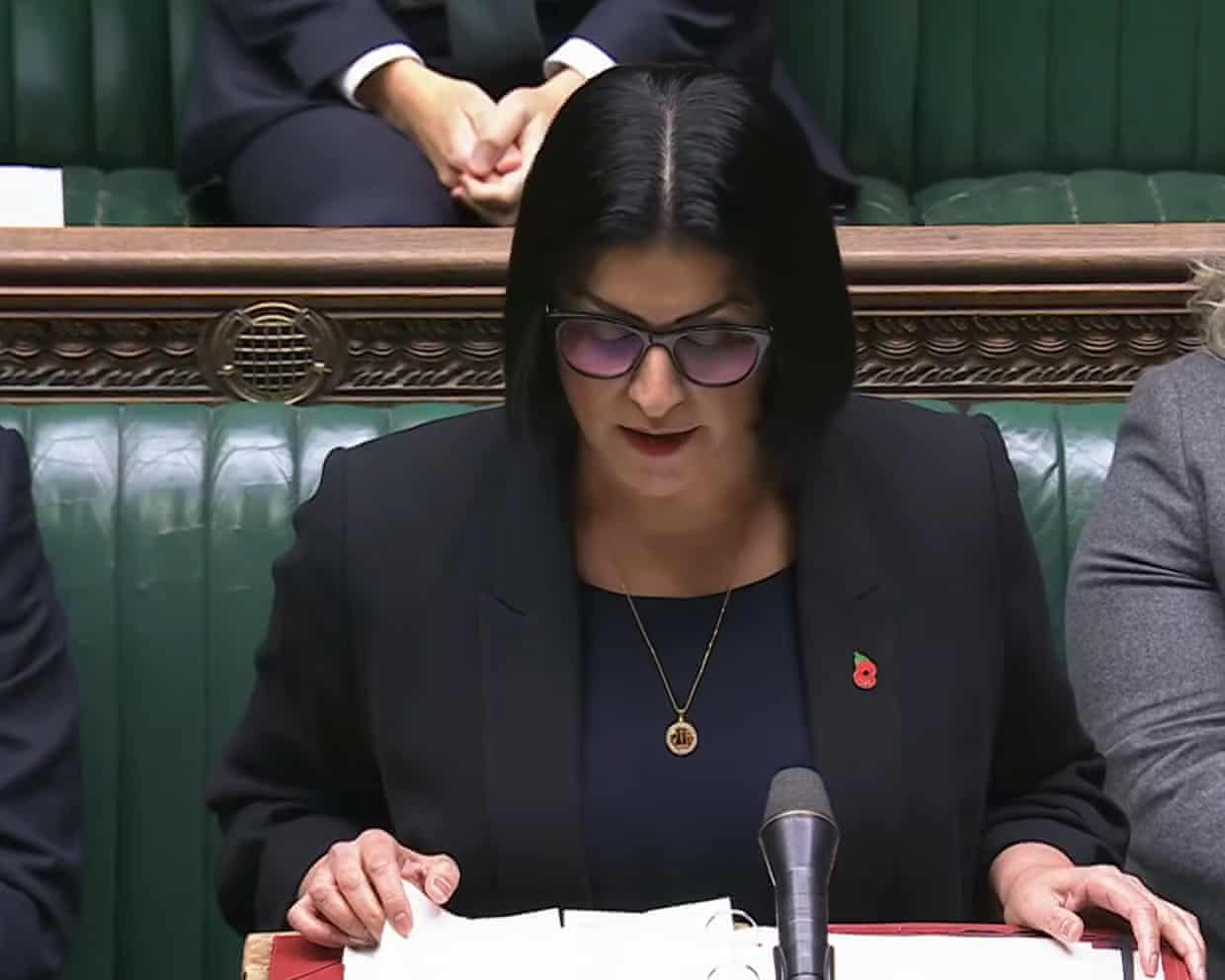
UK politics: MPs spar over response to Cambridgeshire train attack – as it happened
Max Wilkinson, the Lib Dem home affairs spokesperson, said within hours of this attack happening, social media was full of speculation about this attack, inciting racist and Islamphobic reaction.He accuses “figures on the hard right, including members of the Reform party” of trying to “exploit the incident for political gain”.Desperate to involve themselves in the tragedy, they reached for their dog whistles. They threw around baseless opinions on levels of crime when facts were available. They were shamelessly trying to turn tragedy into yet another excuse to whip up fear and sow division
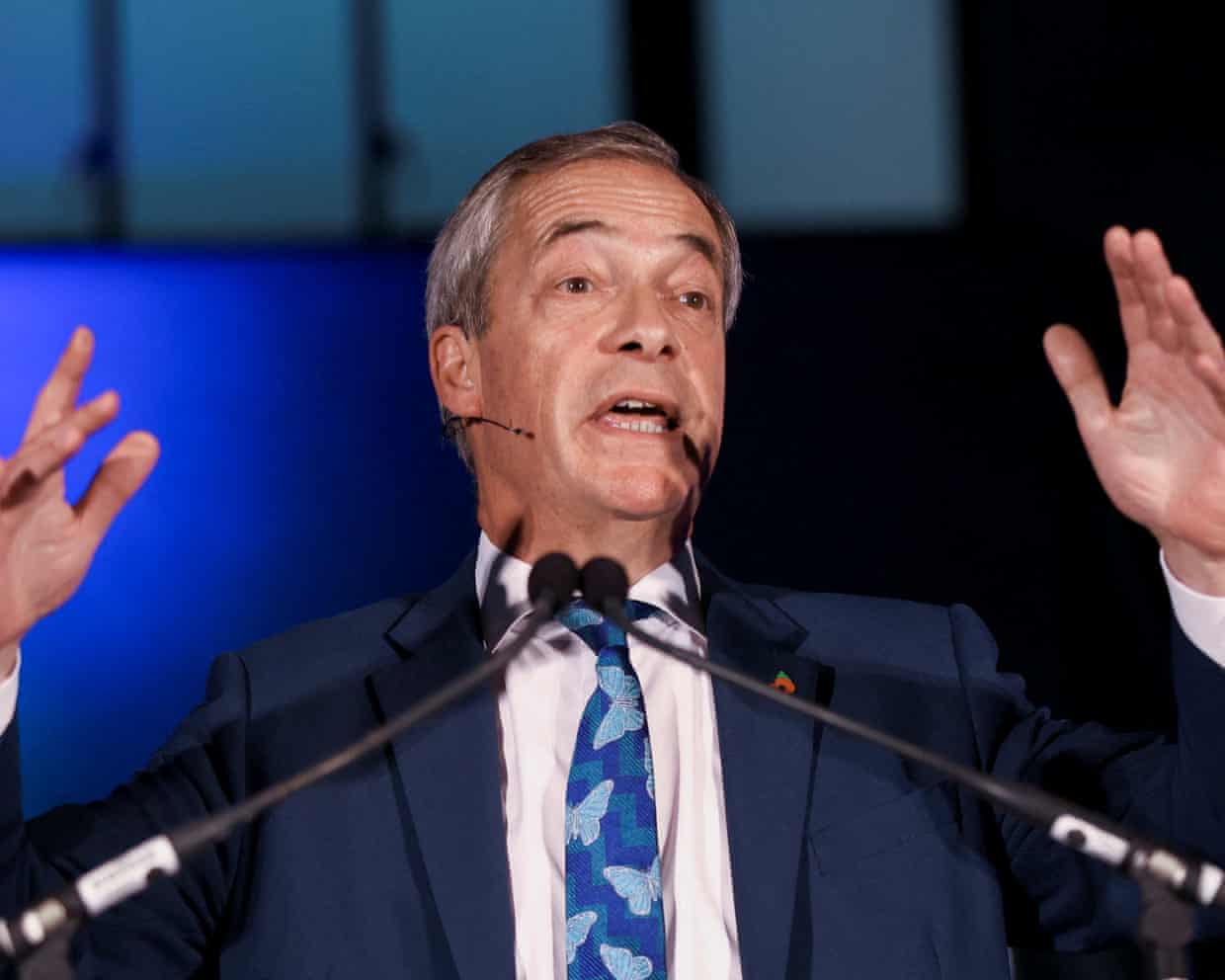
What would UK economic policy look like under Nigel Farage’s Reform?
Nigel Farage has delivered a speech on his economic priorities. While it did not announce any new policies as such, it marked the most detailed explanation yet of what a Reform UK government might prioritise. Below are six areas he discussed.As recently as the buildup to May’s local elections, Reform was pledging to raise the threshold at which people start paying income tax from £12,570 to £20,000, bringing many thousands out of tax but costing the exchequer more than £40bn a year.Amid increasing scrutiny about how or if this could be paid for, Farage has rolled back
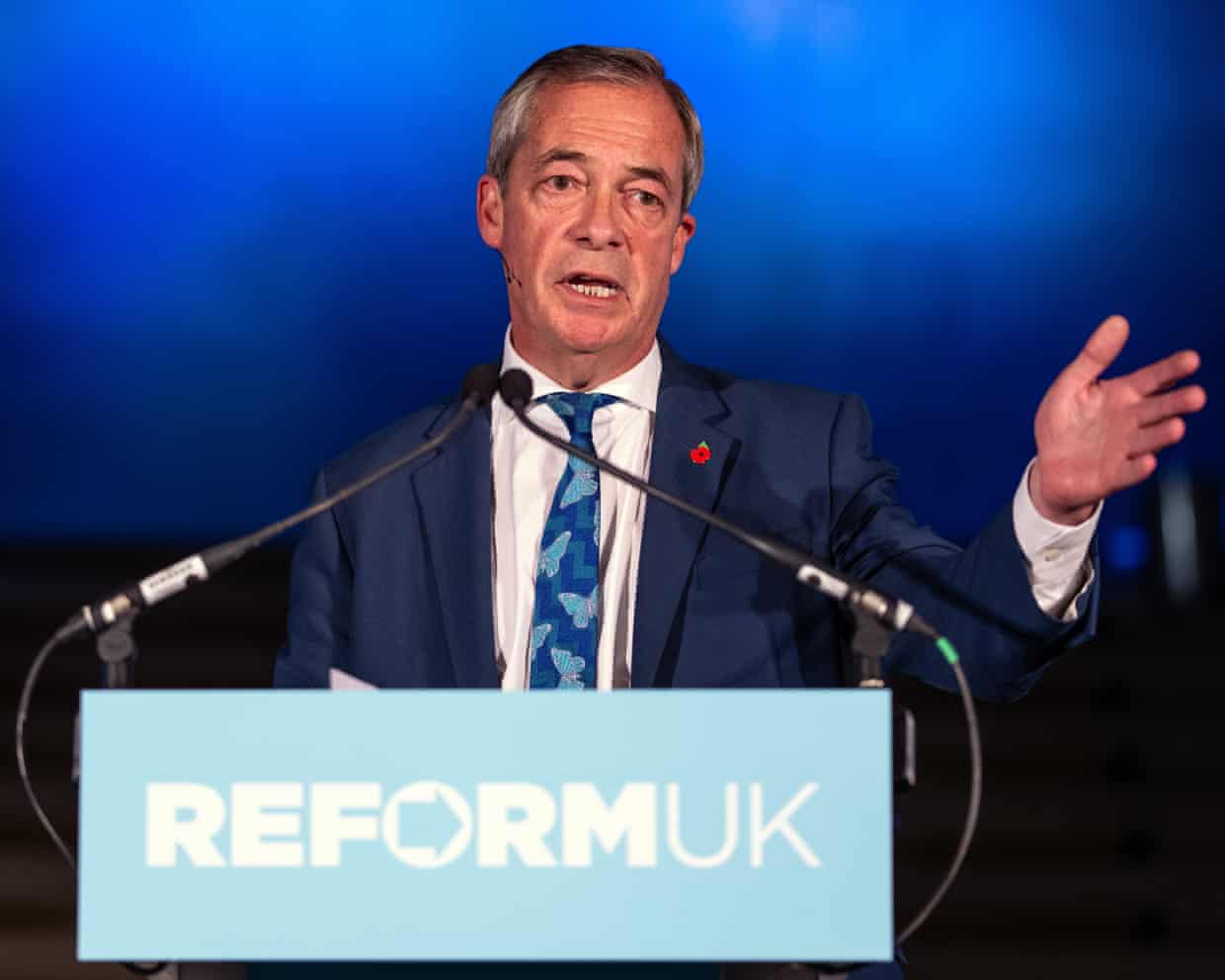
Nigel Farage backtracks on Reform UK’s promise to cut £90bn of taxes
Nigel Farage has rowed back from his party’s election promise to cut £90bn of taxes, accusing Labour and the Tories of “wrecking the public finances” and saying Reform UK would need to get public spending under control first.The Reform leader rejected suggestions he had been forced to break manifesto promises in order to gain economic credibility, suggesting the proposal had only ever been an “aspiration”.As well as backtracking on the party’s 2024 pledge to raise tax-free thresholds to £20,000, he refused to guarantee that the pensions triple lock – estimated to reach £15.5bn by 2030 – would remain under a Reform government.Farage’s speech in the City of London laid bare the tensions at the heart of his project, as he attempts to improve his party’s economic credibility, which political opponents regard as a weak point, while at the same time retain the electoral benefits of political insurgency

Nigel Farage to promise business deregulation in economic policy speech
Nigel Farage will promise a bonfire of business regulation as he spells out his party’s economic policies in more detail than ever in an attempt to bolster its reputation for fiscal credibility.The Reform leader will give a speech in London putting deregulation at the heart of his economic agenda, while also dropping a commitment made at the last election to deliver £90bn of tax cuts.The message is designed to bolster his party’s reputation for fiscal credibility after experts warned that his promises to cut £350bn from government spending over the next parliament did not add up.Farage will say: “When it comes to Brexit … we have not taken advantage of the opportunities to deregulate and become more competitive. The harsh truth is that regulations and regulators, in many areas, are worse than they were back in 2016

Tory patience wears thin as Badenoch’s critics count down to May elections
At an opulent speakeasy-style event at the Raffles hotel on Whitehall this week, the great and the good of what is left of the Conservative party marked the Spectator’s parliamentarian of the year awards.With the magazine’s editorial line still just about backing the Tories, despite the party facing an existential crisis from Reform UK, it was unsurprising that much of the gossip at the champagne-fuelled event was about whether Kemi Badenoch’s job was at risk.James Cleverly, who unsuccessfully ran against her for the leadership, couldn’t resist a dig from the stage at the naked ambition of his shadow cabinet colleague, Robert Jenrick – who is Badenoch’s biggest threat.“Am I after her job? Am I going to stick the knife between her shoulder blades and steal the crown? No, of course I’m not,” the veteran Tory cabinet minister told the laughing audience as he opened the awards ceremony.“You know that I’m not

Josh O’Connor: the shape-shifting star who became cinema’s most wanted

From Bugonia to All’s Fair: your complete entertainment guide to the week ahead

Stephen Colbert on ex-prince Andrew: ‘Pervert formerly known as prince’

Womad festival returns and moves to new Wiltshire site

Seth Meyers on Trump’s South Korea visit: ‘Getting the royal treatment he so desperately craves’
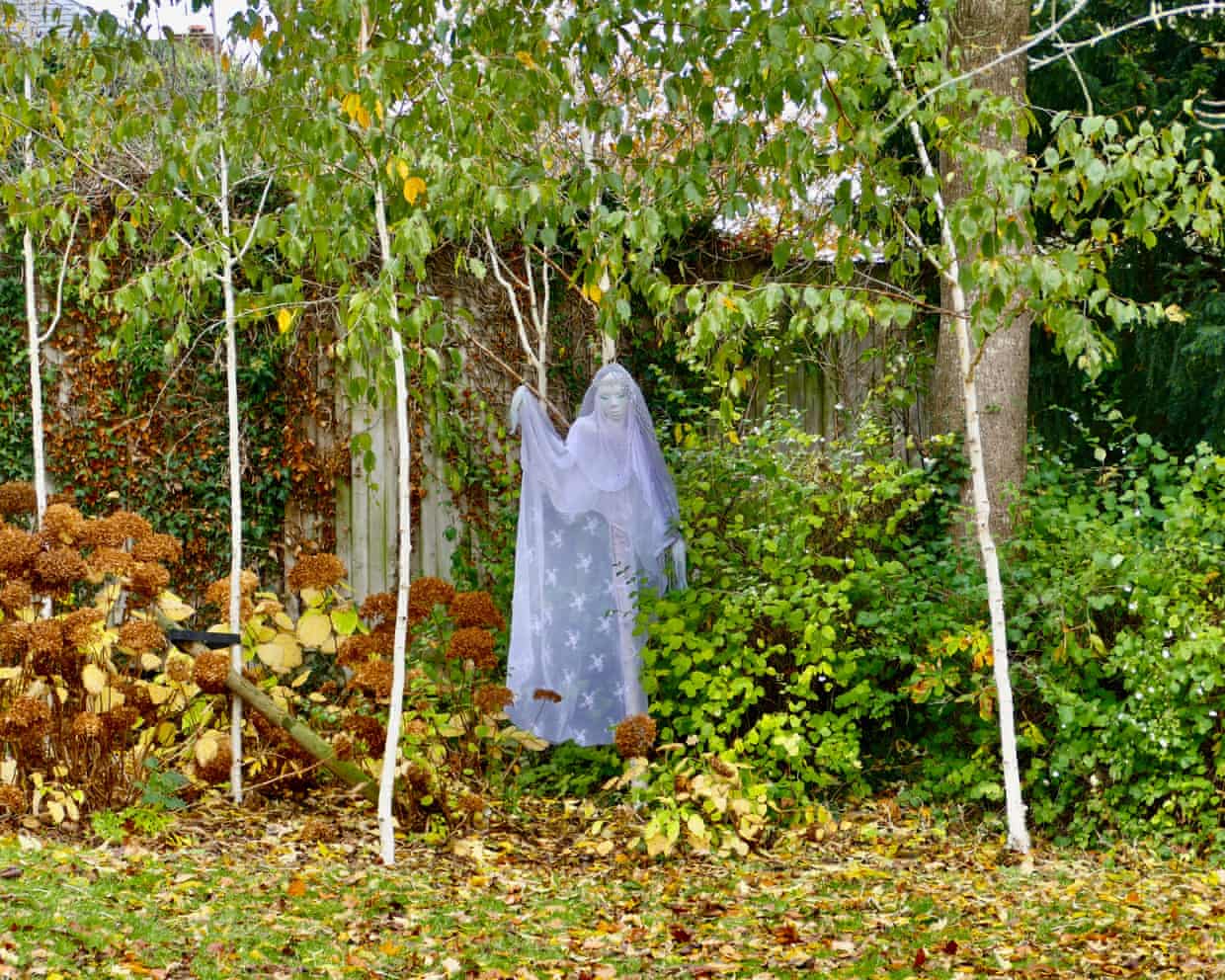
A third of people in England believe in ghosts, survey finds